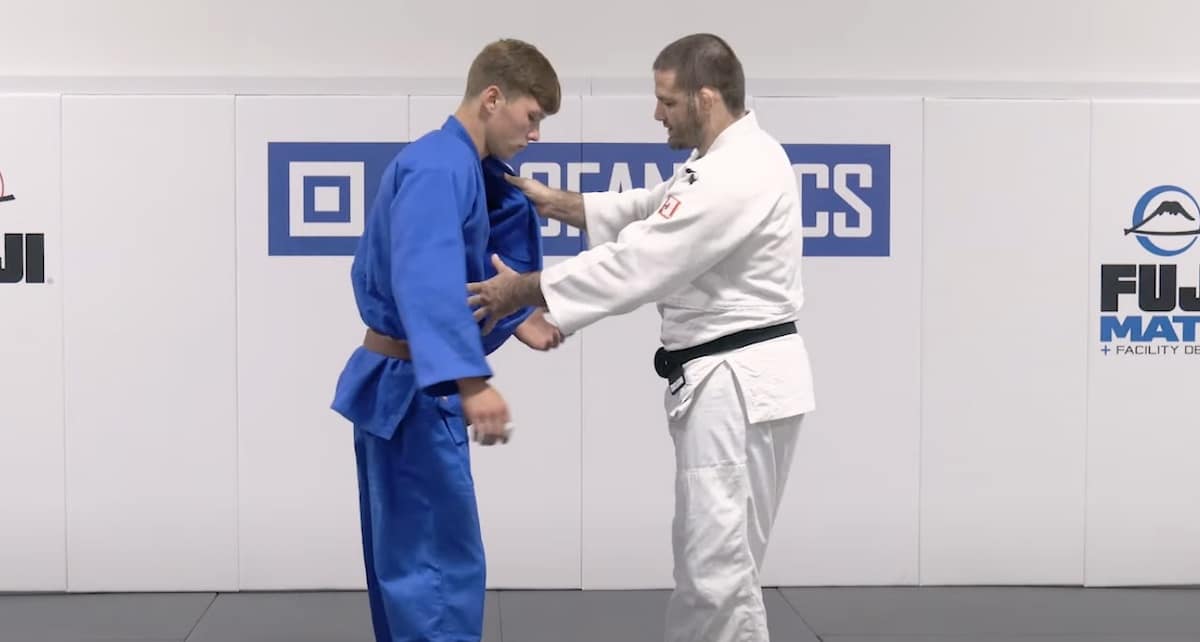Uchikomi: Judo Repetition

In Judo, when they practice technique, Judokas use a form of training called “uchikomi.” Those not familiar with Judo may have no idea what the term means.
Let’s go over what uchikomi means and detail the origins of the term. We’ll also go over these types of training that are performed in Judo.
What Does Uchikomi mean?
In Judo, the term uchikomi is what Judokas call their repetition training. The term was originally coined within Kendo and was adopted within Judo.
When Judokas do this training in class, they practice throws by doing numerous repetitions to improve their skills and strength. Uchikomis can also be used as warm ups before a competition for Judokas to prepare.
This type of repetition training is vital to learning the art of Judo and becoming a skilled Judoka.
Types of Uchikomi
There are actually three different types of uchikomi that Judokas perform in training. They will perform one of the three following types of Uchikomi.
- One-Person
- Two-Person
- Three-Person
One-Person Training
One-person uchikomi is done when a Judoka is by themselves without a partner or doing a strength and conditioning routine. The light form of one-person training is basically the equivalent to shadow boxing in boxing or Muay Thai.
Judokas will lightly go over the movements of throws to practice the movements without using force.
Then the other type of one-person training is done with force that is done during a strength and conditioning routine. Judo practitioners will either use their belt or resistance bands to mimic throws during a strength training circuit.
Examples of One-Person Training
As mentioned above, one-person uchikomi can be used as a form of shadow boxing or for conditioning. All high-level Judokas do one-person uchikomi during their strength training routines.
The piece of equipment that they love to use the most are resistance bands. Sturdy resistance bands allow them to take grips like their grabbing a Gi and go through the motions of different throws.
Practicing throws at a high pace with bands will improve your strength, cardio, and grip strength all at the same time.
Two of the most popular Judo techniques practiced with bands are seoi nage variations and posture breaks.
Two-Person Training
Two-person uchikomi training is the most common type of training done within Judo. When you’re in a Judo class, the majority of the class will be doing two-person uchikomi training.
The person practicing the technique is called the tori and the other person is referred to as the uke or dummy. One Judokas will spend a certain amount of time practicing the technique on their partner and then they’ll switch roles.
Two-person training can also be implemented into a conditioning routine. Going through techniques at high speed to improve technique and strength.
Examples of Two-Person Training
There’s many examples of two-person Uchikomi training, but we’ll go one specifically. A two-person lifting drill that builds strength and teaches you how to properly lift an opponent for a throw.
The two-person uchikomi lifting drill is used to teach throws, where you lift your partner above your head. Doing this lifting drill helps Judokas develop core strength and learn how to correctly lift their opponents.
To do this drill correctly, get your grips, use your footwork to step into your partner, and get under their hips. Once you connect these steps, you’re going to engage your core, and lift your partner up with ease.
When doing this two-person training, you stop at the lift and don’t complete the throw. Just to build strength and understand the mechanics of the throws.
Three-Person Training
Then along with one and two-person training, you also have the three-person style of training This type of uchikomi is practiced as a whey to add more resistance and build strength.
When you perform a three-person uchikomi, there are two ukes and one tori. The tori will be doing any type of Judo technique on one uke and the second uke will be behind the first. Acting as sort of an anchor, which forces the tori to use more force.
Examples of Three-Person Training
Three-person training is used predominantly to add more resistance to the tori that is doing the throw. This type of training can be used for both throwing techniques and takedowns.
For throwing techniques, it is basically the same as the two-person uchikomi. The only difference is the second uke grabs hold of uke one’s Gi. Forcing the tori to use more force in order to lift the uke one.
Then when practicing leg hooking takedowns like ouchi gari against two ukes will force the tori to use more force.
Uchikomi vs. Randori
When you practice Judo, the classes are often broken up into two parts. Uchikomi training and then randori training.
Uchikomi training is often done for the first half to three quarters of a Judo class. Judo students will constantly drill and do endless reps during this portion of a Judo class.
Then in the last part of their class, they will then go into randori training. The word “randori” is the term used in Judo for free sparring.
Judo students will practice like they’re in a competition and spar their opponent for up to five minutes. Whenever a student completes a throw on their partner, they will reset and go again until time is up.
Is Uchikomi Vital to Learning Judo?
If you ever decide to learn Judo, then you will predominantly be doing uchikomi training. This type of training is vital for Judo students to learn the techniques in Judo.
As a Judo student, you must constantly drill and get your reps in order to develop your skill. It’s the way it has always been done in Judo, because it’s effective and works. Prepare to do thousands of hours of rep training if you decide to learn Judo.






